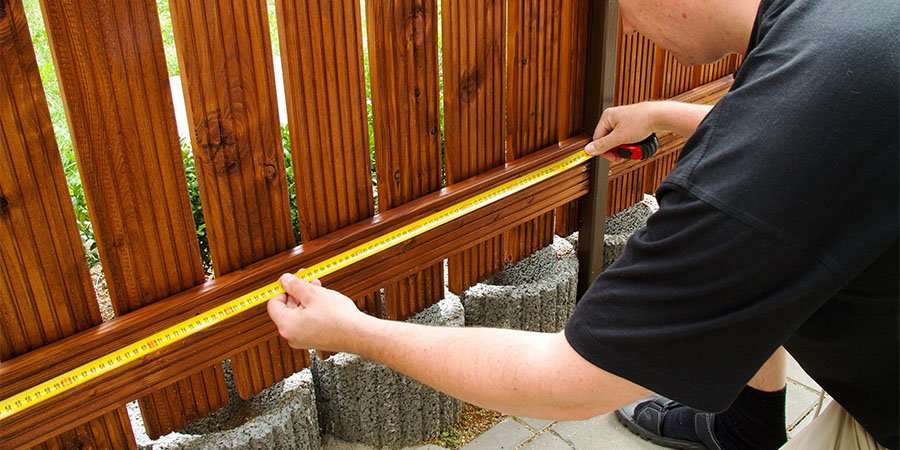All Categories
Featured
Setting up a brand-new fence is an amazing task that can boost your property's visual, security, and personal privacy appeal. While the setup process may seem straightforward, the time it takes can differ based upon a number of variables. Typically, fencing setup takes anywhere from 1 to 5 days, however this can expand relying on the dimension, complexity, and products included.
Average Installment Timelines by Fencing Kind. Timber Fences:. Wood fences are prominent for their all-natural appeal, but their installation can take much longer. A typical wood fencing installation extends 2-- 4 days due to steps like cutting, constructing, and applying safety layers such as repaint or stain.
![]()
Vinyl Fences:. Due to the fact that it comes in pre-assembled panels, vinyl fence is typically quicker to install. A lot of projects can be finished in 1-- 3 days, depending on the fencing's length.
Chain-Link Fences:. Chain-link fencings are straightforward and can frequently be set up in 1-- 2 days, making them one of the fastest choices.
Steel or Wrought Iron Fences:. These fences can take 3-- 5 days or longer as a result of their weight and the accuracy required for appropriate placement and safeguarding.
Compound Fences:. Composite products are resilient and developed for effectiveness, with setup timelines similar to vinyl fences at 1-- 3 days.
Key Aspects That Effect Installment Timelines.
![]()
Just How to Get Ready For a Faster Setup. Conduct a Website Analysis: Walk your building to determine prospective challenges, such as inclines, tree roots, or utility lines. Plan for Permits: Begin the authorization procedure as early as feasible to avoid hold-ups. Select the Right Season: Pick a time when climate condition agree with for outdoor work. Communicate with Specialists: Discuss your task timeline and any kind of details problems prior to installment starts. Verdict. While most fencing installments are completed in just a couple of days, various elements can influence the timeline, such as product type, home dimension, and weather problems. By comprehending these aspects and preparing your site beforehand, you can help ensure a smooth installation process. Partnering with experienced experts will additionally make a considerable difference, ensuring your fence is installed efficiently and to the greatest criterion.
Average Installment Timelines by Fencing Kind. Timber Fences:. Wood fences are prominent for their all-natural appeal, but their installation can take much longer. A typical wood fencing installation extends 2-- 4 days due to steps like cutting, constructing, and applying safety layers such as repaint or stain.

Vinyl Fences:. Due to the fact that it comes in pre-assembled panels, vinyl fence is typically quicker to install. A lot of projects can be finished in 1-- 3 days, depending on the fencing's length.
Chain-Link Fences:. Chain-link fencings are straightforward and can frequently be set up in 1-- 2 days, making them one of the fastest choices.
Steel or Wrought Iron Fences:. These fences can take 3-- 5 days or longer as a result of their weight and the accuracy required for appropriate placement and safeguarding.
Compound Fences:. Composite products are resilient and developed for effectiveness, with setup timelines similar to vinyl fences at 1-- 3 days.
Key Aspects That Effect Installment Timelines.
- Job Size and Fence Length. The total dimension of the job is a key factor. Larger residential properties or longer fences require even more time to finish, as added blog posts, panels, and labor are entailed.
- Website Prep work. Prior to installation can start, the site needs to be all set. Clearing particles, leveling unequal terrain, and addressing underground energies can add hours or days to the procedure.
- Soil Conditions. Soft soil enables for faster digging of post openings, while clay-filled or rough dirt can reduce progress. Professionals may require specific devices in these instances.
- Licenses and HOA Approvals. Regulatory needs can postpone the start of installation. Make certain all essential permits and approvals from your local government or HOA are secured ahead of time.
- Climate and Seasonal Aspects. Rainfall, snow, or extreme heat can interfere with installment schedules. As an example, icy ground in winter months is harder to dig, potentially lengthening the process.
- Design Complexity. Custom fencings with elaborate layouts, contours, or attractive components require additional time for exact measurements and installation.

- Staff Size and Efficiency. A bigger team of skilled installers can finish projects much faster than a little or less experienced crew.
Just How to Get Ready For a Faster Setup. Conduct a Website Analysis: Walk your building to determine prospective challenges, such as inclines, tree roots, or utility lines. Plan for Permits: Begin the authorization procedure as early as feasible to avoid hold-ups. Select the Right Season: Pick a time when climate condition agree with for outdoor work. Communicate with Specialists: Discuss your task timeline and any kind of details problems prior to installment starts. Verdict. While most fencing installments are completed in just a couple of days, various elements can influence the timeline, such as product type, home dimension, and weather problems. By comprehending these aspects and preparing your site beforehand, you can help ensure a smooth installation process. Partnering with experienced experts will additionally make a considerable difference, ensuring your fence is installed efficiently and to the greatest criterion.
Latest Posts
Uncover the Premier Auto Repair Coupons in Montclare, Chicago
Published May 25, 25
1 min read
Check Out Premier Auto Repair Care offered by Montclare Auto Repair – Drive with Confidence
Published May 23, 25
1 min read
Enhance Your Building with Overhead Door Equipment
Published May 22, 25
1 min read
More
Latest Posts
Uncover the Premier Auto Repair Coupons in Montclare, Chicago
Published May 25, 25
1 min read
Check Out Premier Auto Repair Care offered by Montclare Auto Repair – Drive with Confidence
Published May 23, 25
1 min read
Enhance Your Building with Overhead Door Equipment
Published May 22, 25
1 min read